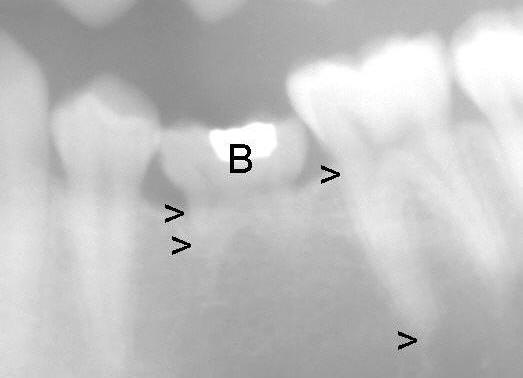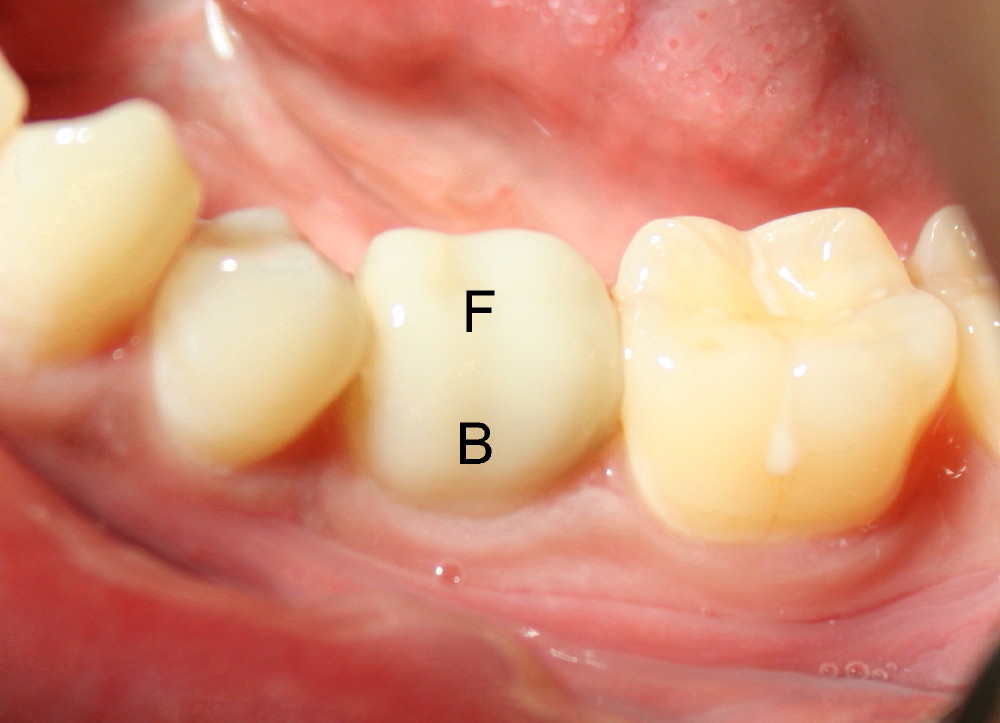

 |
|
| Fig.1 | Fig.2 |
 |
|
| Fig.3 |
Dental Education Lecture: Keep Baby Tooth As Long As Possible
Occasionally, our permanent teeth do not form. Most common missing teeth are wisdom teeth. It is the most lucky thing in the world not to have wisdom teeth. We do not have to suffer from pain when the wisdom teeth come out and pain associated with extraction. The second most common missing teeth are the 2nd premolars. It is much less fortunate to miss the 2nd premolar. When we do not have it, the baby tooth that the 2nd premolar is going to replace does not fall out regularly or on time. As neighboring permanent teeth come out and grow up, the retained baby tooth become "shorter" as shown in Fig.1: B. That is the biting surface of the baby tooth (B) is lower than those of its neighbors. There is extra space between this baby tooth and the neighbor upstairs. The latter may grow downward, creating biting problems. To prevent this, we can add filling material (Fig.2 F) on the top of the retained baby tooth. You can see how big the space is. The other advantage of adding filling material is that the patient may chew better.
Let us go back to Fig.1. The retained baby tooth has very short roots (indicated by two arrowheads), as compared to the root of its neighboring tooth. This suggests that the retained baby tooth may fall out in the future, although the tooth is very stable now. What we can do is keep this baby tooth as long as possible. In fact, this 20 year old college student and his family are very grateful to our service. A baby tooth is so emotionally attached to its owner. As dentists, we need to think twice before taking out any tooth, baby or adult. Four years has passed since the filling was placed (Fig.3). The patient loves it. He can chew with it very well.
The other option for the retained baby tooth is early extraction and braces.
Xin Wei, DDS, PhD, MS 1st edition 06/06/2010, last revision 12/23/2012